Class Mammalia
Order Rodentia
Family Sciuridae
Ammospermophilus sp.—Antelope Squirrels // Ammospermophilus interpres—Texas Antelope Squirrel // Ammospermophilus leucurus—White-tailed Antelope Squirrel
Synonyms. Spermophilus. At times, Ammospermophilus has been treated as a subgenus of Spermophilus.
Antelope Squirrels are medium-sized ground squirrels characterized in the flesh in part by single white stripes along each side of the body. Three species occur in our region. In New Mexico, Ammospermophilus interpres occurs east of the Rio Grande Valley, north to Bernalillo County, NM, and southeast into the Trans-Pecos. Ammospermophilus leucurus comes south to central Socorro County west of the Rio Grande Valley. It is separated geographically from A. interpres by the Rio Grande Valley and the ecological niches of the two taxa. The eastern A. interpres is limited to rocky habitat and apparently does not abandon such habitat for the non-rocky interval between the foothills and the floodplain of the Rio Grande. The western A. leucurus descends onto the slopes of the valley on the western side, but apparently is unable to penetrate the riparian valley growth of the floodplain (Findley et al. 1975).
The geographic range of A. leucurus continues northwesterly, eventually looping southward on the west side of the Colorado River in eastern California. The Colorado River Valley separates it from A. harrisii on the east side. The latter taxon occurs from there to southwestern New Mexico, but does not approach the other two species in New Mexico. Non-biologists frequently mistake these for chipmunks, but antelope squirrels lack facial striping and a dorsal stripe.
Osteologically, Ammospermophilus can be mistaken for members of the genus Tamias and the spermophiles. If the maxilla is preserved, an infraorbital canal rather than just an opening in the zygomatic plate will separate Ammospermophilus and the spermophiles from Tamias. Dental characteristics also will separate most teeth of Tamias (see Tamias account and image of lower tooth row of Tamias in the Sciuridae account).
In Ammospermophilus, the masseteric tubercle is directly below a narrowly oval infraorbital foramen, whereas in the spermophiles, the masseteric tubercle is medium to large and ventral to slightly lateral to an oval or subtriangular infraorbital foramen (Hall 1981). Other differences are more subtle and most identifications depend on direct comparison with modern specimens.
Literature. Findley et al. 1975; Hall 1981.
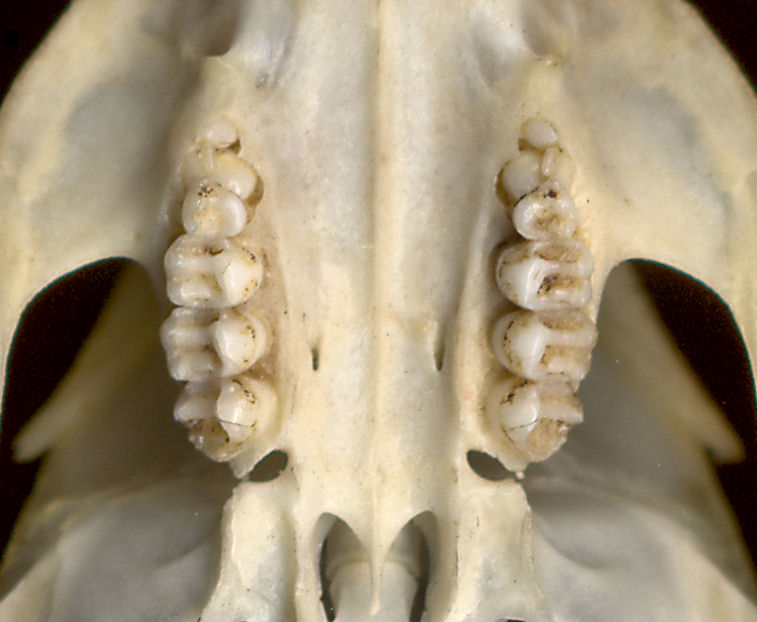
Fig. 1. Palatal region of Ammospermophilus leucurus. The entrance to the infraorbital canal can be seen anterior to the tooth row. In this individual, DP3 and DP4 are in the process of being replaced by P3 and P4.
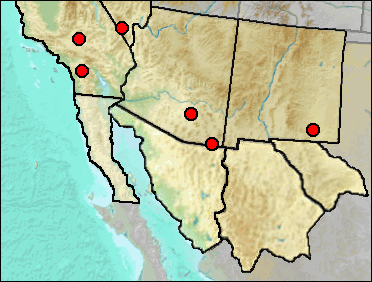
If going on geography alone, the record from Lost Valley should pertain to A. interpres, but because of the relatively early age of the deposit, assignment to genus-only seems wise.
Sites.
Rancholabrean: Hoffman Road (Jefferson 2014).
Early/Early-Mid Wisconsin: Lost Valley (Harris 1993c).
Mid/Late Wisconsin: Diamond Valley (Springer et al. 2009: cf. gen.).
Late Wisconsin: Murray Springs (Lindsay and Tessman 1974); Picacho Peak (Van Devender et al. 1991); Potosi Mountain (Mead and Murray 1991).
Literature. Harris 1993c; Jefferson 2014; Lindsay and Tessman 1974; Mead and Murray 1991; Springer et al. 2009; Van Devender et al. 1991.
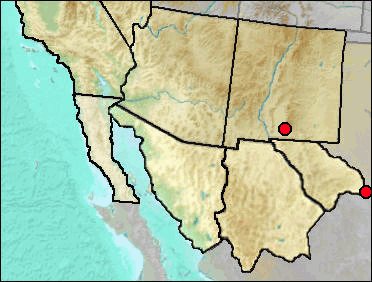
The type locality of A. interpres is El Paso. Assignment of the fossil material to species is on geographic grounds alone.
Sites.
Mid Wisconsin: Pendejo Cave (Harris 2003).
Late Wisconsin: Cueva Quebrada (Lundelius 1984).
Late Wisconsin/Holocene: Pendejo Cave (Harris 2003: cf.).
Literature. Harris 2003; Lundelius 1984.
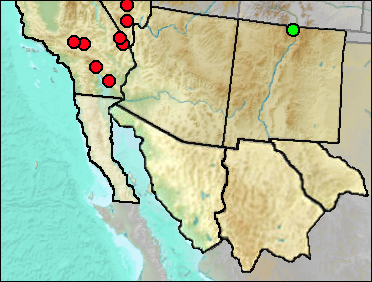
Today, A. leucurus is distributed from central New Mexico west of the Rio Grande Valley to Sandoval Co. and then northwest into the San Juan Basin and beyond. The Rio Grande Rift from southern Sandoval Co. north appears to not support it.
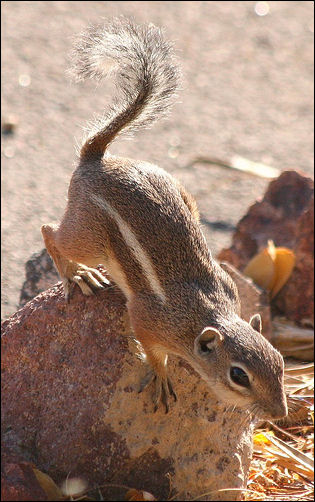
Fig. 1. White-tailed Antelope Squirrel. Photo used under Creative Commons from J. N. Stuart.
Sites.
Medial Irvingtonian: SAM Cave (Rogers et al. 2000).
Rancholabrean: Centennial Parkway, Las Vegas Valley (Jefferson et al. 2015); Flowing Wells No. 3 (Jefferson 1991b ?); Flowing Wells No. 10 (Jefferson 1991b ? gen. et sp.); Tule Springs (Springer et al. 2005).
Mid/Late Wisconsin: Pintwater Cave (Hockett 2000).
Late Wisconsin: Antelope Cave (Reynolds, Reynolds, Bell, and Pitzer 1991: cf.); Mountain View Country Club (Jefferson 2014).
Late Wisconsin/Holocene: Kokoweef Cave (Reynolds, Reynolds, et al. 1991: cf.); Luz Solar Trough (Jefferson 1991b); Newberry Cave (Jefferson 1991b); Solar One (Jefferson 1991b).
Literature. Hockett 2000; Jefferson 1991b, 2014; Jefferson et al. 2015; Reynolds, Reynolds, et al. 1991; Reynolds, Reynolds, Bell, and Pitzer 1991; Rogers et al. 2000; Springer et al. 2005.
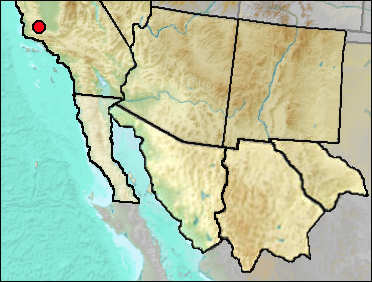
Sites.
Mid Wisconsin: McKittrick (Schultz 1937: cf.).
Literature. Schultz 1937.
Last Update: 11 May 2015